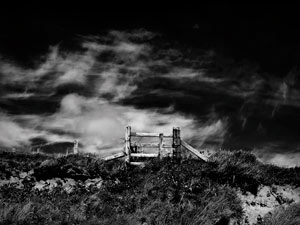articles/Digital/digitaworkflow-page1
Digital Workflow - part 1 of 1
by Malcolm Sales Published 01/11/2009

It's well said that without a plan you won't get to where you want to go. Many photographers complain that they are spending too much time in front of their computers. The answer is to have a clear understanding of how you want to progress your work. In other words, a plan.
When planning your digital workflow, much like creating a website or a spreadsheet, it's best to close the computer and get out an old-fashioned pencil and piece of paper. Sit down and sketch out your plan for handling your digital files from shooting through to final delivery to your client.
Apart from anything else one benefit from writing down your workflow is that you have a document that can be passed on if you need to have an assistant process your files for you. You will also have refined in your own mind how you operate with your images.
For example at Buttercross Photography our workflow is:
Before the event:
- Synchronize the clocks on each camera to be used.
- Format all compact flash cards in the camera of use.
After the event:
- Download files simultaneously to two separate hard drives.
- Use the nomenclature year/month/day/name.
- Select OUT 'blinks and blurred'.
- With duplicate images select out the lesser images - only ONE is needed.
- Refine your selection to a manageable number.
- Rename the final selection.

Previewing to the client.
Options are:
- Web page.
- Slide show.
- Contact prints.
Final Output:
- JPEGs for a digital album/e-commerce website
- Prints.
- CD of refined files.
Computer
The system I use is applicable to either PC or Mac operating systems.
- System Hard Drive c250gb. This drive is used for the Operating System and Programs.
- Data Hard Drives 1tb each. At least two; at least 1 terrabyte each for holding the image files.
- Two lightscribe DVD drives.
- Built-in card reader.
- Two Screens - one the best you can get!
An external hard drive is useful for holding a copy of your files allowing you to work on two computers (such as a laptop whilst out in the field and then working on your desk machine).
Software
We at Buttercross Photography shoot our weddings and portraits in RAW. Unfortunately each camera model (let alone brand) produces a unique form of RAW. We always shoot in RAW, and at present shoot with Nikon D300 & D700. But we have files from Fuji S2 & S3, Nikon D200, Olympus E3 and Canon G6! I've not found any of the RAW converters from the camera manufacturers are particularly good at handling large quantities of large files, and they only work for their own brand. For this reason I use a specialist third-party RAW converter.
For professional photographers handling a large quantity of files, I've found Adobe's Lightroom to be the best product available and there are both PC and Mac versions. Other programs are available including Apple Aperture (Mac only), Capture One and Bibble also have a devout following.
You are currently on page 1 Contact Malcolm Sales
1st Published 01/11/2009
last update 09/12/2022 14:53:22
More Digital Articles
There are 36 days to get ready for The Society of Photographers Convention and Trade Show at The Novotel London West, Hammersmith ...
which starts on Wednesday 14th January 2026





